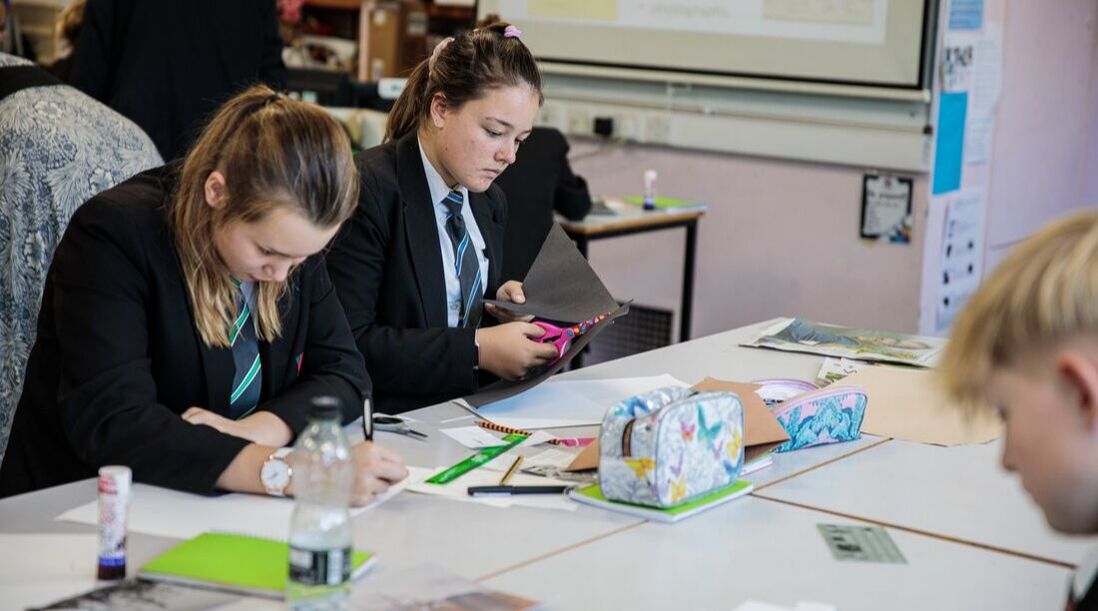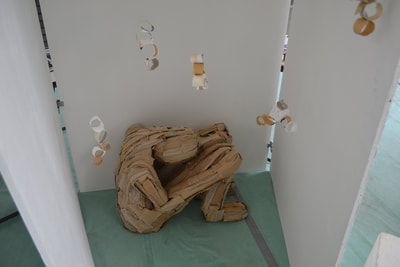Art and Design Department IntentThe department curriculum is structured to engage and inspire students to believe in their potential and to enable them to take risks to explore a range of materials whilst refining and developing creative skills. We ask students to form opinions whilst exploring the work of others and offer students the opportunity for self-reflection whilst broadening their cultural experiences. The curriculum makes natural links to other subjects and underpins student’s development of knowledge through schemes of work that challenge and inspire students to learn with increasing independence and challenge throughout the key stages. The foundation of the department is that if a student receives the highest quality experiences, they will have the confidence to independently take risks in their work so that they are able to accelerate their learning. This is evidenced in our department results. ALL department staff have positive aspirations for ALL students and the positive atmosphere the department creates is essential to the success of our curriculum. Students feel secure and so are able to take risks and explore their work making meaningful personal connections. The curriculum has been developed to enable students to develop the skills and knowledge needed for A level and no student is deemed incapable of developing those skills even if their prior starting point from KS2 is low. Staff work closely with local primary schools on projects and workshops to ensure transition is strong to maximise the right level of challenge in year 7. The curriculum is planned to assess current knowledge and skills of individuals before adapting a learning sequence to address gaps in knowledge or skills. Students in Y7, 8 and 9 are taught elements of art simultaneously to enable teachers to maximise the challenge they are setting between year groups and for students to be able to confidently identify the progress they are making to take advantage of that feeling of success to drive excellence and further challenge. The department offers a broad range of extra-curricular opportunities through art clubs, competitions, exhibitions, community projects, whole school impact days, the Arts Award, visiting artist workshops and trips both in the UK and internationally. We actively target disadvantaged groups to ensure uptake is at least at 25% of the cohort. Praise is widely used through our stars and artwork of the month, parents are engaged with this through email notifications and use of Facebook to showcase students work. KEY STAGE 3
What do students study?
The aims of the Art and Design department is for pupils to produce personal responses to the observed and imagined world. Pupils are encouraged to investigate a range of media and materials including painting, drawing and three dimensional processes. During key stage 3 pupils are also able to extend their experiences of art through workshops and community projects. Pupils have access to two art studios and their work is regularly exhibited throughout the school and in the wider community to celebrate success and achievement. KS3 art students are able to join Art club where they have opportunities to extend their studies as well as taking part in local competitions and events. Students work has been on exhibition at Kennaway house for Sidmouth Daffodil Day and every year we create a mural for Budleigh Salterton Literary Festival. Art in year 7 and 8 enables students to build core skills with a focus on the formal elements of Art. Students are taught how to research artists work and respond creatively to the work through personal outcomes and class discussion. Students are able to investigate various techniques with opportunities to try printmaking, photography and 3D design. Students are encouraged to use the schools learning habits to develop their skills and confidence. In year 9 students are given the opportunity to explore various drawing, painting, printing, and sculpture techniques in a variety of projects. Focus is very much on direct observation drawing and building up skills in various media. Areas covered include:
The summer term in year 9 is workshop based and students are introduced to a variety of exciting processes to broaden their experiences and develop their skills set in art. How are students assessed? In Key Stage 3, students are assessed formatively on pieces of work throughout each project. This is done by either by their teacher, as a whole class discussion, or as a self or peer assessment. Time is regularly spent discussing how to recognise a piece of work from each level and how to improve each student’s own work to raise their grade to the next stage. Students record these various assessments in target graphs in the back of their books where they can clearly see their progression and areas of strength and weakness. Each project is then given a summative assessment at the end of the project by the teacher. Students are introduced to and regularly practice the main skills which are required for the GCSE programme of study, gradually building confidence and familiarity with these skills. Within each Scheme of Work these skills typically include Observation, Experimentation, Refinement, Presentation, Realisation and Reviewing work. Researching Historical and Contemporary Artists is regularly set as homework tasks to build research skills. KEY STAGE 4
WHO IS THIS COURSE FOR?
EXAM BOARD, COURSE CONTENT & ASSESSMENT DETAIL Exam Board—AQA Component 1 coursework (60%) Component 2 Exam (40%) The course is taught through a number of projects over the two years. The projects are based on interesting themes and we encourage you to explore the themes in depth. To help you develop your ideas you will experience a variety of ways of working, discover new techniques and find out how to use many different materials. You will be helped to explore how artists, designers and craftspeople have developed their own ideas and you will be able to try these in your own work. You will be shown how to draw from observation to build skills and confidence in manipulating the formal elements. Your sketchbook will be an important record of your ideas over the two years and forms an important part of your final assessment. Homework assignments will be directly related to your coursework. WHAT CAN THIS COURSE LEAD TO POST 16? This course provides a strong foundation for further progression into Art and Design related courses such as A-level Art and Design/photography, higher education, foundation studies, apprenticeships and university courses. FOR WHAT CAREERS WILL THIS COURSE BE USEFUL? Fashion Buyer Interior designer Fine artist Television Art Director Medical Illustrator Lighting Designer Cinematographer Graphic designer Architect Set designer Product designer Community Art worker Tattoo designer Furniture designer Industrial designer Shoe designer Landscape designer Museum or Art gallery curator Advertising Graphic designer Game designer Art teacher Sketch artist Illustrator Print maker/ printer Court artist Ceramic Artist Jewellery designer OTHER RELEVANT INFORMATION At the end of the course your work is displayed for final moderation by the examiners. This includes your portfolio work in your sketchbooks - coursework (60%) and your examination work (40%) It is worth bearing in mind that the creative industries are the biggest employer in the UK at present and this GCSE will help your employability. Art is primarily coursework based so this involves time and care to complete classwork and homework throughout the two years. KEY STAGE 5
Introduction In Art we try to develop a sense of excitement and fun in the selection and handling of a wide range of materials, and use this to relate our own feelings to the visual and tactile elements of the external world. What do Students Study? Drawing is central to our work, being a good way of collecting information, as well as helping us to understand what we see around us and develop our responses to it. We also study the work of artists from all periods and cultures so we can better understand their techniques, how it expresses both their own individuality and the context in which it was made. To this end, we arrange visits to art galleries. We have visited London, Barcelona and other local galleries as well as inviting artists into school to run workshops with students. We like to encourage people to work in as individual a way as possible, so the work from any one group will cover a whole range of approaches and styles. No-one is forced to be a traditional painter if they would rather aspire to be a future Turner Prize winner! How are students assessed? Your work will be assessed using 4 assessment objectives. The course involves both portfolio work and practically set assignments to be carried out under examination conditions. You will have regular reviews with your teacher to help and guide your learning. Component 1 Portfolio 60% Component 2 Externally set assignment 40% |
Access Octomono Masonry Settings
Subjects
All
|
- Home
-
About Us
- About our School
- Board of Governors
- Careers & Education Guidance
- Contact
- Equality
- Ethos and Values
- Exam Results >
- Hire of School Premises
- Links & Partnerships
- Ofsted Reports
- Our People
- Performance Data
- Policies
- Principal's Welcome
- Pupil Premium
- SEF & College Priorities
- Sidmouth College Way
- Ted Wragg Trust
- Vacancies
- Visitor Information
- Wellbeing at School
- Admissions
- Learning
-
Parents
-
Students
- Sixth Form
Useful links |
Navigate |
|
© Sidmouth College 2020 | Primley Road, Sidmouth, Devon EX10 9LG | Website design by Bright Blue C












